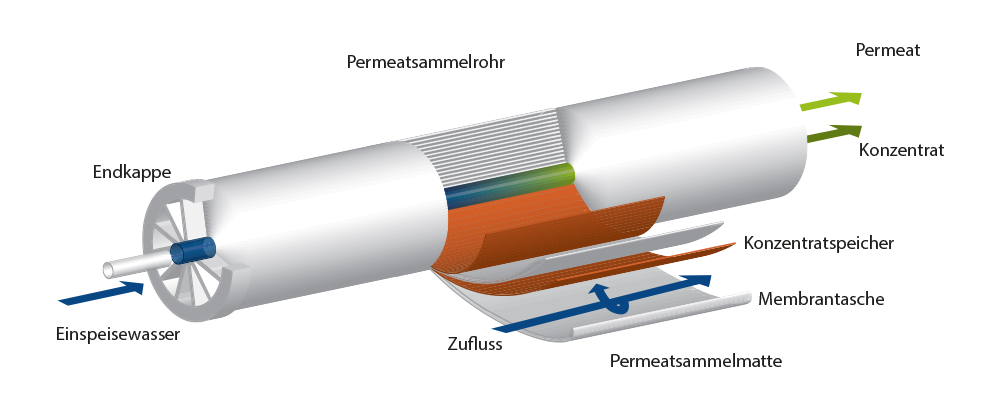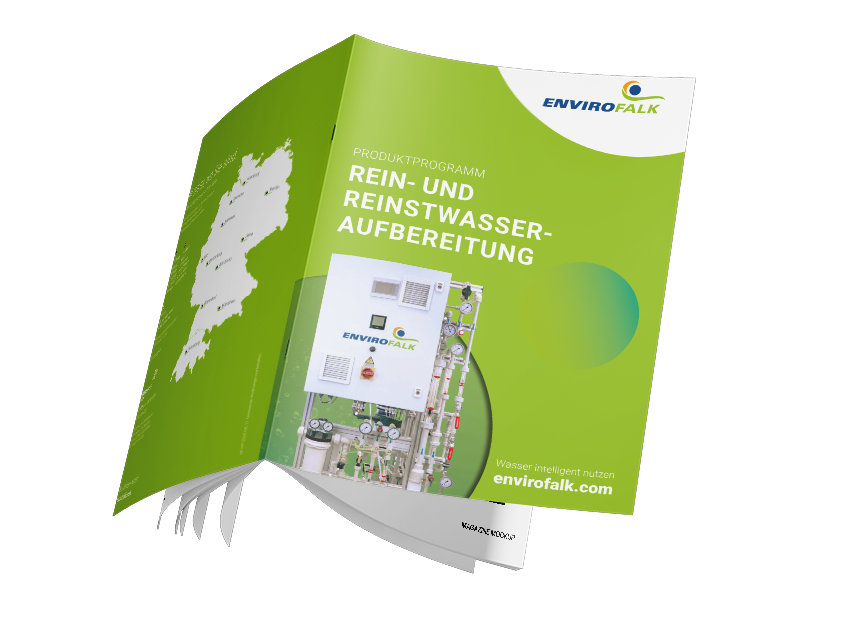How reverse osmosis works – RO
Reverse osmosis (reverse osmosis system) is based on the effect of osmosis, which can be seen in nature, for example, in burst cherries after a summer rain. The cherry contains a concentrated solution, the cherry juice. The raindrop represents the diluted solution. The skin of the cherry now equalizes the concentrations. The solvent enters the cherry through the cherry skin, the semi-permeable membrane. The system strives to achieve a balance between the two concentrations. However, as the volume of the cherry cannot increase, the pressure rises. This pressure is the osmotic pressure. In nature, this increase in pressure causes the cherry to burst. If this effect is reversed, the result is a reverse osmosis system. Pressure is exerted on the concentrated solution in order to overcome the osmotic pressure of this solution. The solvent passes through the membrane again and all dissolved water components remain on the concentrate side.
Reverse osmosis water filter (Reverse Osmosis – RO)
Reverse osmosis (reverse osmosis system), also known as reverse osmosis (RO), is a membrane process that retains ions as well as particulate substances in the water. This reverses the natural process of osmosis. In reverse osmosis systems, the saline solution (e.g. softened city water) is passed under pressure through semi-permeable membranes in the form of winding elements. Only the solvent, i.e. pure water, passes through the membrane and is obtained with a very low salt content as so-called permeate. All water constituents are concentrated and must be discharged to the sewer with a second partial flow, the concentrate.
Reverse osmosis system (reverse osmosis system, RO)
On a large scale, a reverse osmosis system (RO) is not operated as dead-end filtration, but as cross-flow filtration. The raw water supply is divided into a pure water – the permeate with a proportion of 75-80 % and a residual salt content of approx. 2 % – and a concentrate, with which all other water constituents are continuously discharged from the reverse osmosis system. Reverse osmosis is often used in ultrapure water systems for green hydrogen production.


